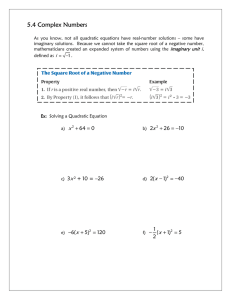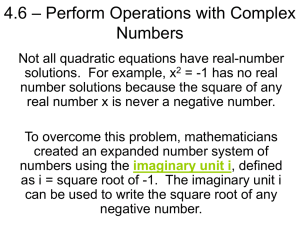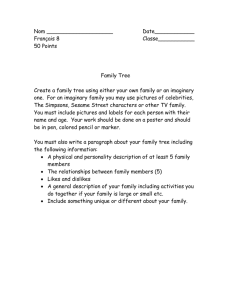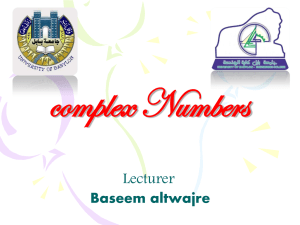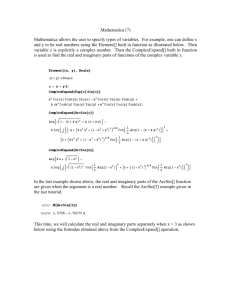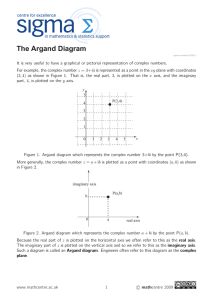Chapter (1) Complex numbers
advertisement
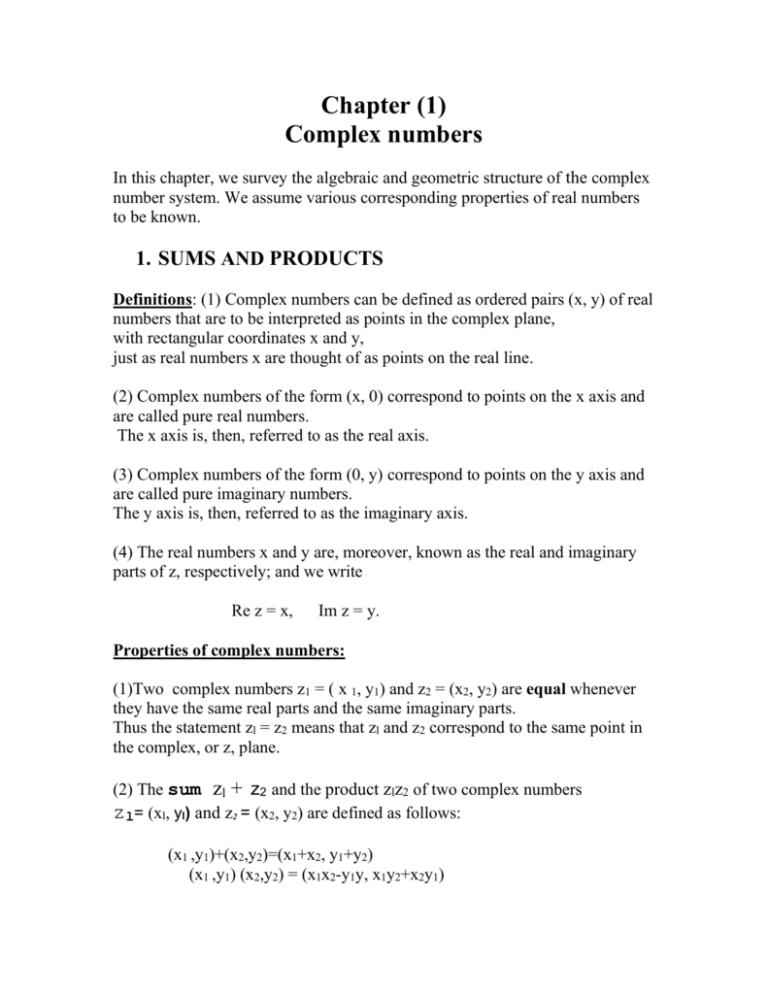
Chapter (1) Complex numbers In this chapter, we survey the algebraic and geometric structure of the complex number system. We assume various corresponding properties of real numbers to be known. 1. SUMS AND PRODUCTS Definitions: (1) Complex numbers can be defined as ordered pairs (x, y) of real numbers that are to be interpreted as points in the complex plane, with rectangular coordinates x and y, just as real numbers x are thought of as points on the real line. (2) Complex numbers of the form (x, 0) correspond to points on the x axis and are called pure real numbers. The x axis is, then, referred to as the real axis. (3) Complex numbers of the form (0, y) correspond to points on the y axis and are called pure imaginary numbers. The y axis is, then, referred to as the imaginary axis. (4) The real numbers x and y are, moreover, known as the real and imaginary parts of z, respectively; and we write Re z = x, Im z = y. Properties of complex numbers: (1)Two complex numbers z1 = ( x 1, y1) and z2 = (x2, y2) are equal whenever they have the same real parts and the same imaginary parts. Thus the statement zl = z2 means that zl and z2 correspond to the same point in the complex, or z, plane. (2) The sum zl + z2 and the product zlz2 of two complex numbers zl= (xl, yl) and z2 = (x2, y2) are defined as follows: (x1 ,y1)+(x2,y2)=(x1+x2, y1+y2) (x1 ,y1) (x2,y2) = (x1x2-y1y, x1y2+x2y1) Note: 1) Note that the operations defined above become the usual operations of addition and multiplication when restricted to the real numbers: (x1,0)+(x2,0)=(x1+x2,0) (x1,0)(x2,0) = (x1x2,0) 2) Any complex number z = (x, y) can be written z = (x, 0) + (0, y), and it is easy to see that (0, l)(y, 0) = (0, y). Hence z = (x,0)+(0,1)(y,0) 3) let i denote the imaginary number (0, 1), it is clear that z = x+ i y Also, with the convention z2 = z z, z3 = z z2, etc,, we find that i2 = (0, l)(0, 1) = (-1, 0), or So, i2 = -1 = (x 1 +x2) + i(y1 + y2), (x 1 + iy 1) (x2 + iy2 ) = (x 1 x 2 - y 1 y2)+i(y1x2+x1y2). (x 1 + iy 1) +(x2 + iy2)
